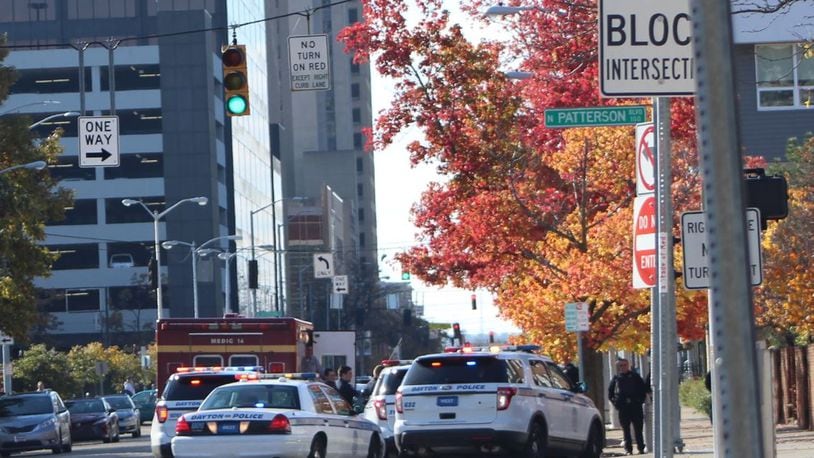MORE: When police fire: Officer-involved shootings in the Miami Valley
However, council members also say that many citizens who have felt mistreated or disrespected by Dayton police do not file formal complaints, sometimes because they do not believe the complaints will be taken seriously or will make a difference.
“For me, one of the biggest takeaways was that so few people complain formally — a lot of us complain informally, but very few people do formal complaints to have them investigated,” said Sherry Gale, a member of the Community Police Council and chair of the Dayton Human Relations Council.
Council members also want to look at the police department’s use of force and vehicular pursuit policies to see if they are satisfactory or could use improvement.
MORE: Officer: Shooting Crawford without giving him time to respond was OK
Between 2014 and 2016, about 1,386 incidents involving Dayton officers were the subject of internal investigations, according to research by the data committee for Dayton’s Community Police Council.
Of the 1,386 incidents, 880 were initiated because of internal police procedures. About 506 of the incidents stemmed from citizens’ complaints.
Of all incidents, 106 (or 7.6 percent of the total) were sustained, meaning the evidence proved the incident occurred and was unlawful and thereby resulted in discipline, ranging from oral reprimands to civil service charges, the report said.
For more than two-thirds of the incidents, the final disposition was “exonerated,” indicating the incident occurred but was determined to be lawful.
Almost 18 percent of incidents were unfounded (evidence proves incident did not occur), while about 7 percent were not sustained (no evidence to either prove or disprove that an incident occurred), the data show.
EARLIER: Dayton’s 42 homicides in 2016 matches high this century
The Dayton Police Department has multiple types of administrative reviews and investigations for significant events like forced entry and use of force that must be reported by policy, said Dayton police Chief Richard Biehl.
These events are documented and reviewed by immediate supervisors and subsequently reviewed by command staff personnel to capture the details of what happened and to ensure officers’ performance complies with policy, procedure and training, Biehl said.
“The relatively low number of sustained investigations for improper conduct is not at all surprising given the quality and extensive nature of recruit training as well as yearly required training and continued education officers receive,” Biehl said.
MORE: Water main breaks: Is your water safe to drink?
The 506 citizen complaints reported between 2014 and 2016 is an “infinitesimal number” compared with the 440,916 calls for service and the 35,862 arrests and 41,868 citations police were responsible for during that time frame, Biehl said.
Members of the Community Police Council agree that the Dayton Police Department has a very thorough and professional set of procedures for investigating citizens’ complaints and officers’ actions after significant events.
“With regards to internal investigations, I think it really makes the police department look good, in terms of policing themselves,” said Branford Brown, executive director of the Miami Valley Urban League and a member of the Community Police Council.
RELATED: Dayton has least diverse police class in a decade
However, police discretion is one of the biggest issues that affect African American communities nationwide, because when officers have wide latitude in how they can react to a situation, that can lead to unequal treatment of citizens, said Brown.
“What happens to a youth in Oakwood should happen to youth in Residence Park,” he said, later adding, “There has to be some discretion, or else everyone would be locked up, but there must be fairness and equity.”
The Community Police Council wants to examine the police department’s policies regarding use of force and vehicular pursuit to see how much discretion officers are given and if there is room for improvement.
One reason the council wants to look more closely at the policies are because black citizens disproportionately are subjected to use of force by Dayton police, compared to their share of the city’s population, according to council members.
“We completely believe (police) are working within the policies they have set,” said Gale, who is senior pastor with Grace United Methodist Church. “The question is whether those are what they need to be — and I don’t know that they aren’t.”
The use of force policy may “be absolutely perfect, it may be great, but let’s understand what it is,” Gale said.
Also, examining and discussing police policies should help build citizen confidence in law enforcement by offering transparency while helping the community better understand how officers operate, council members said.
RELATED: State of race and police-community relations
The Community Police Council and its data committee want to determine if the police department’s processes are trustworthy and, if they are, encourage the community to engage and use them, said Jared Grandy, Dayton’s community-police relations coordinator.
The council has “more work to do,” especially considering that some members of the community do not fully trust law enforcement, Grandy said.
Data from a citywide survey show that black Dayton residents are much less likely to have confidence in Dayton cops than their white peers.
Though about 41 percent of Dayton residents are black, 62 percent of incidents in which police used force involved black citizens, according to the data committee’s research.
Also, black citizens were involved in 92 percent of incidents in which police engaged in a vehicle pursuit, the report found.
The Dayton Human Relations Council invites the community to explore its recently launched community-police relations website at daytoncpr.org
QUICK READS ABOUT DAYTON
About the Author
